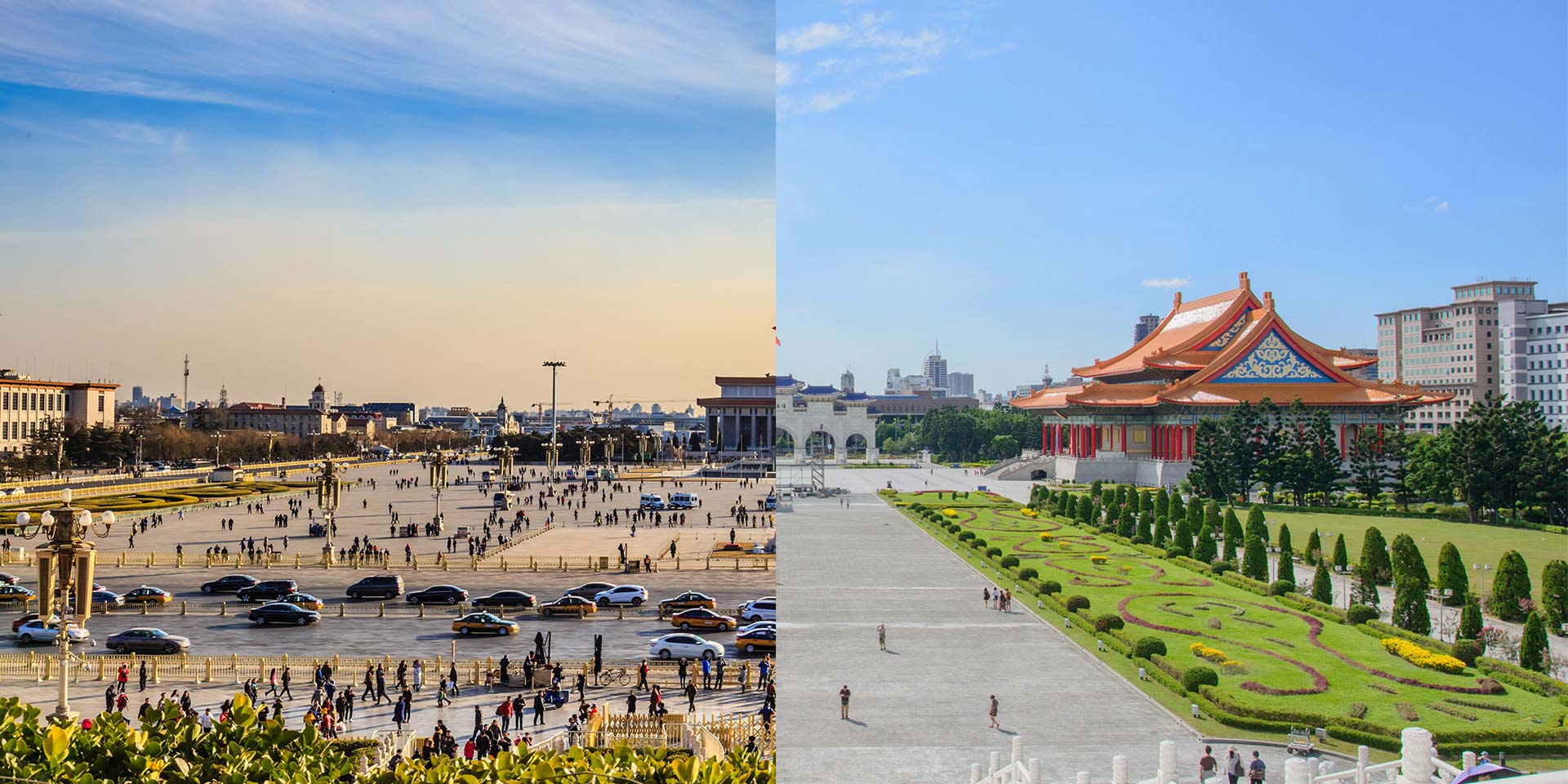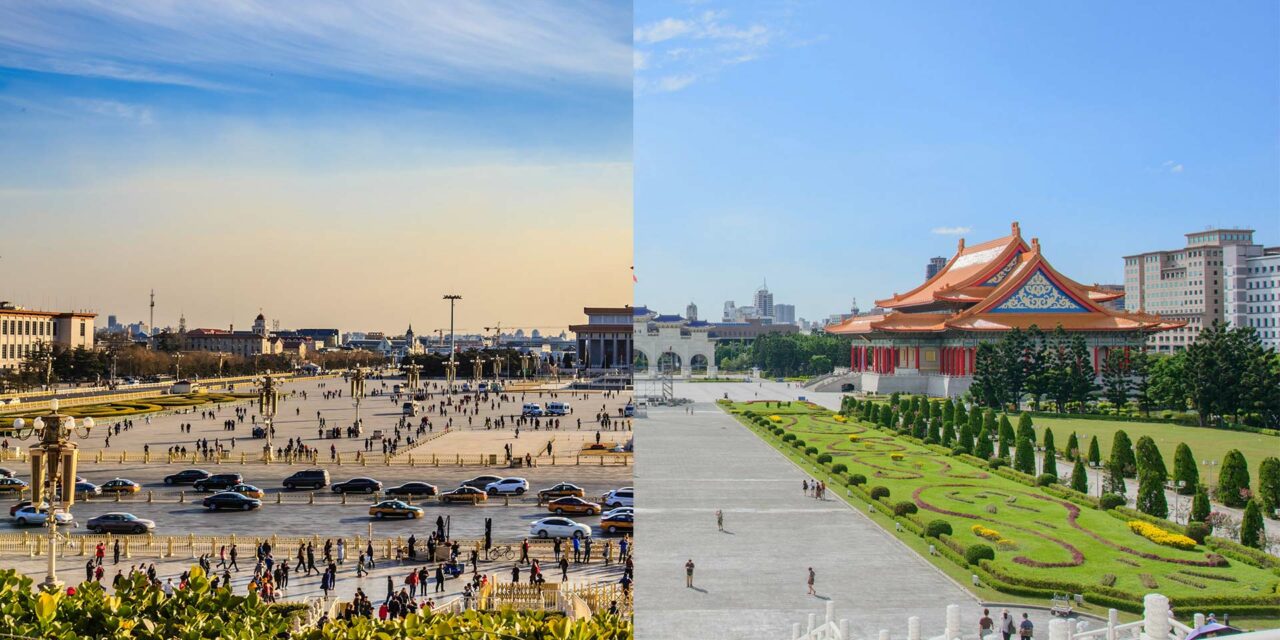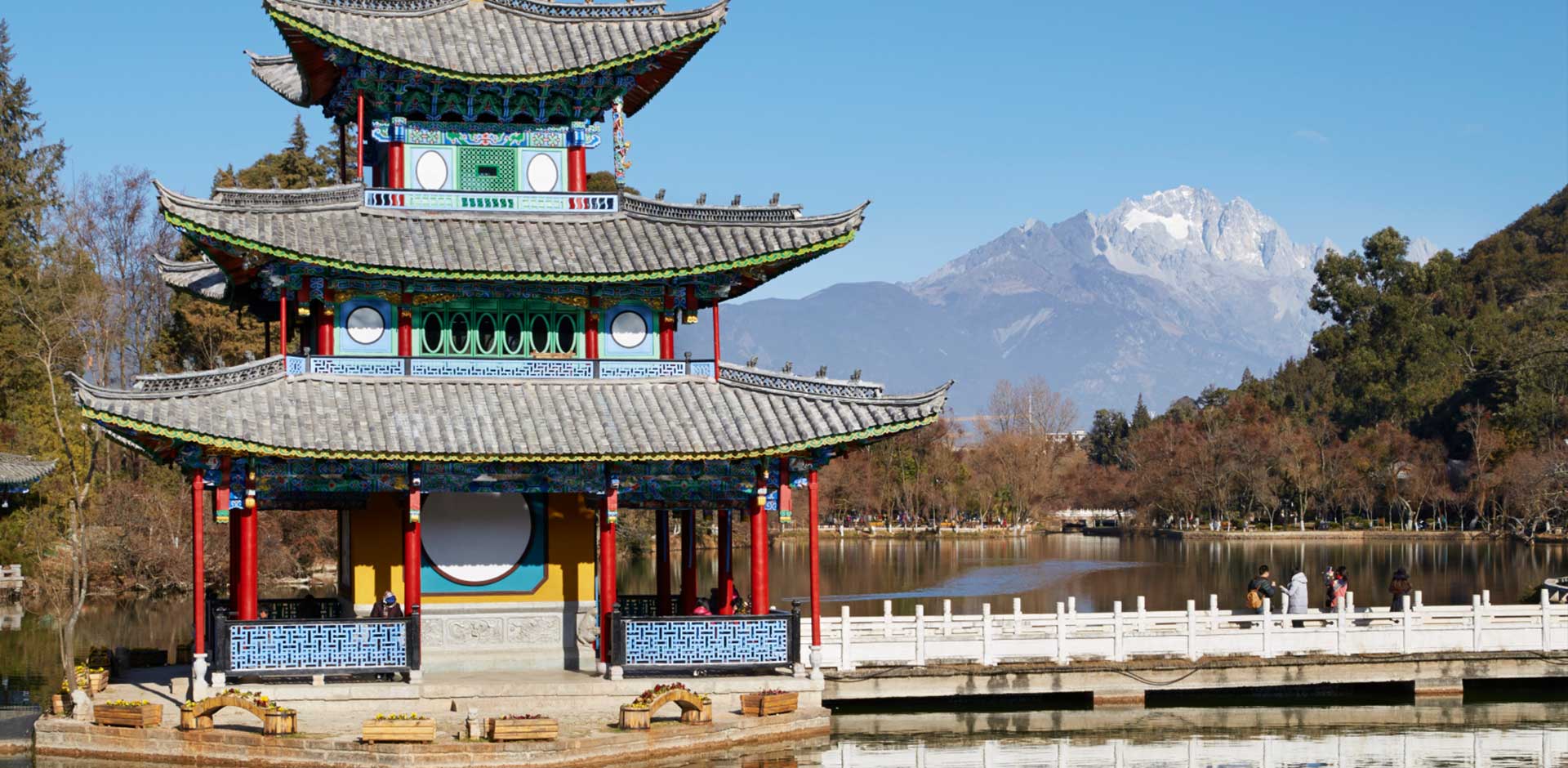Two spaces 1721 kilometers apart: both exist as symbols of a sometimes inconvenient past. Each contains a memorial to a dictator. Yet to walk around Tiananmen Square in Beijing or the Chiang Kai-shek Memorial in Taipei is to appreciate the divergent paths these two capitals have taken in the 21st century.
Tiananmen Square is 109 acres of concrete with hints of greenery to dispel the inclination to describe the space as the world’s largest Walmart parking lot. Getting into the square requires proceeding through at least two checkpoints. Only after they show their passport or Chinese National ID card are visitors allowed past the gates and the guards, and only then if the security forces are sure that those entering the square aren’t journalists trying to make trouble or a poor Chinese farmer with a land grievance and a stack of petitions.
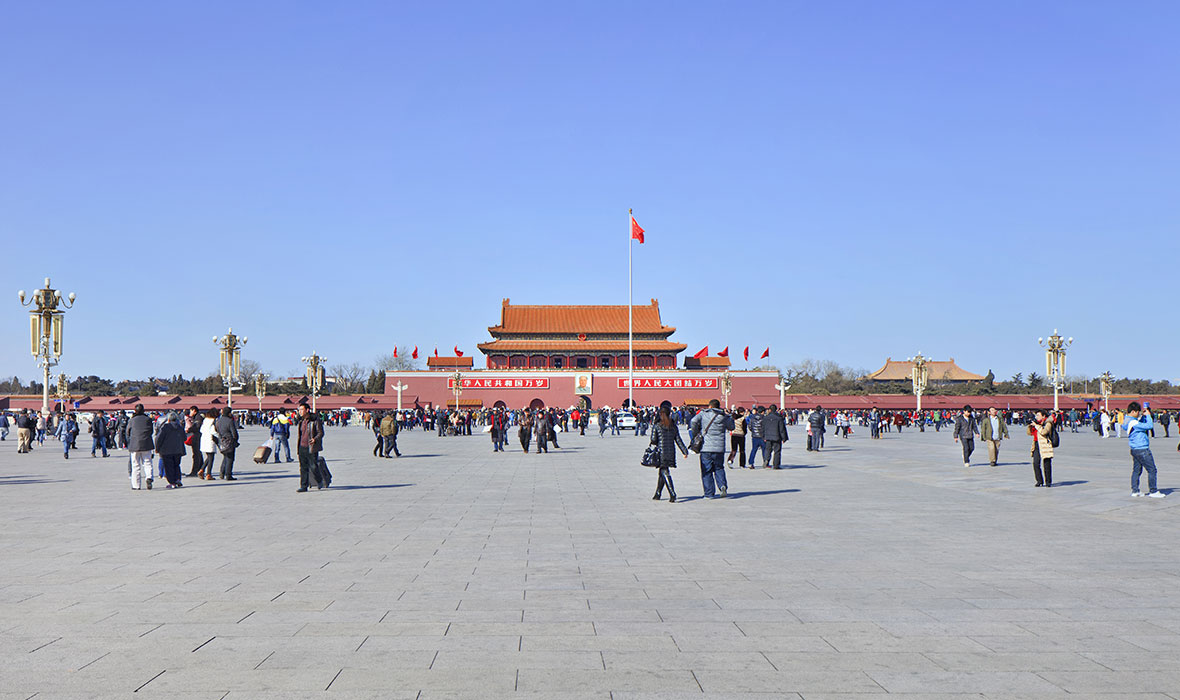
ABOVE: Not much is allowed to be taken inside the Hall.
On most days, the Chairman Mao Memorial Hall, AKA the Maoseleum, is the endpoint for a line snaking in semi-orderly fashion around the eastern side of the square.
Tour guides bark instructions at their charges as tourists drape their camera bags and their backpacks onto the arms and shoulders of the guides. Not much is allowed to be taken inside the Hall. “Make an Orderly Line!” “No bags!” “Observe all posted rules!” forms a backbeat to the steady trudge of visitors from across China. Many of the folks in line are older.
Weather beaten farmer’s faces stare impassively ahead, their wives shading their faces from the morning sun, everyone wearing a one-size-fits-nobody brightly colored cap.
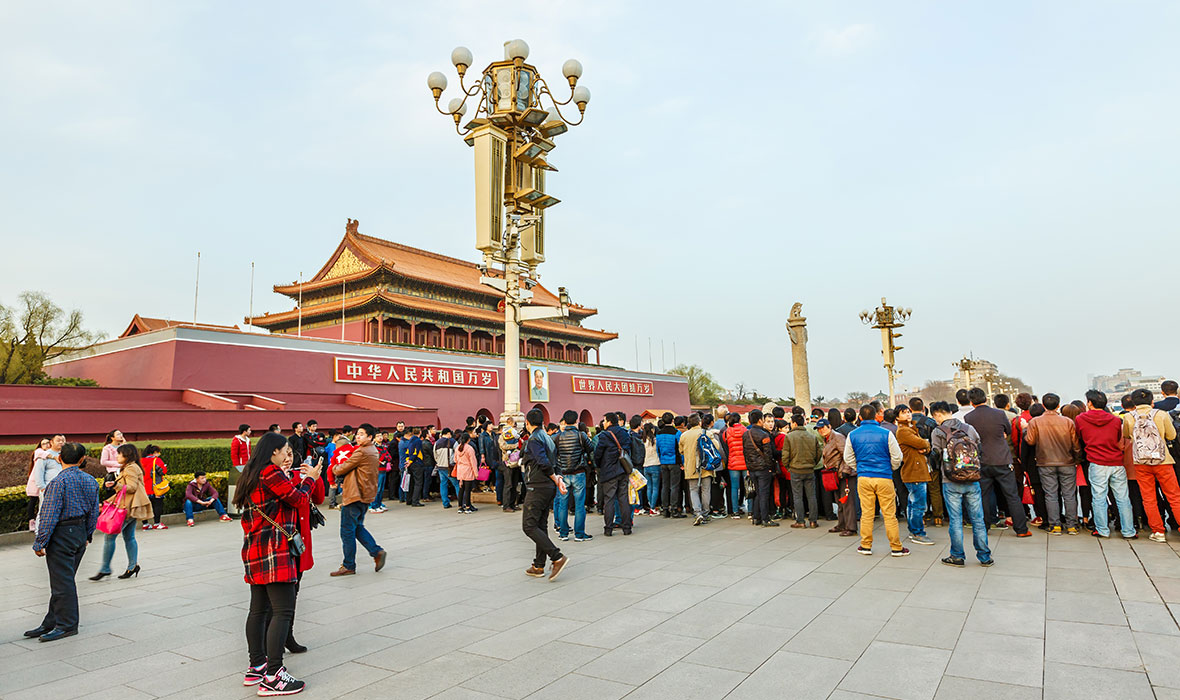
ABOVE: Gate of Heavenly Peace, Beijing.
Younger tourists take selfies or pictures of aged parents. Some kids run by with keening voices but this is not a space for games. The Party wants to preserve Tiananmen Square as a solemn place of reverence, not frivolity and especially not for expression. Groups are closely watched. A group of foreign students pause to listen to their teacher discuss the history of the Square. As the lesson drags on, a policeman wanders over to listen and – perhaps to the students’ relief – asks the teacher to move on.
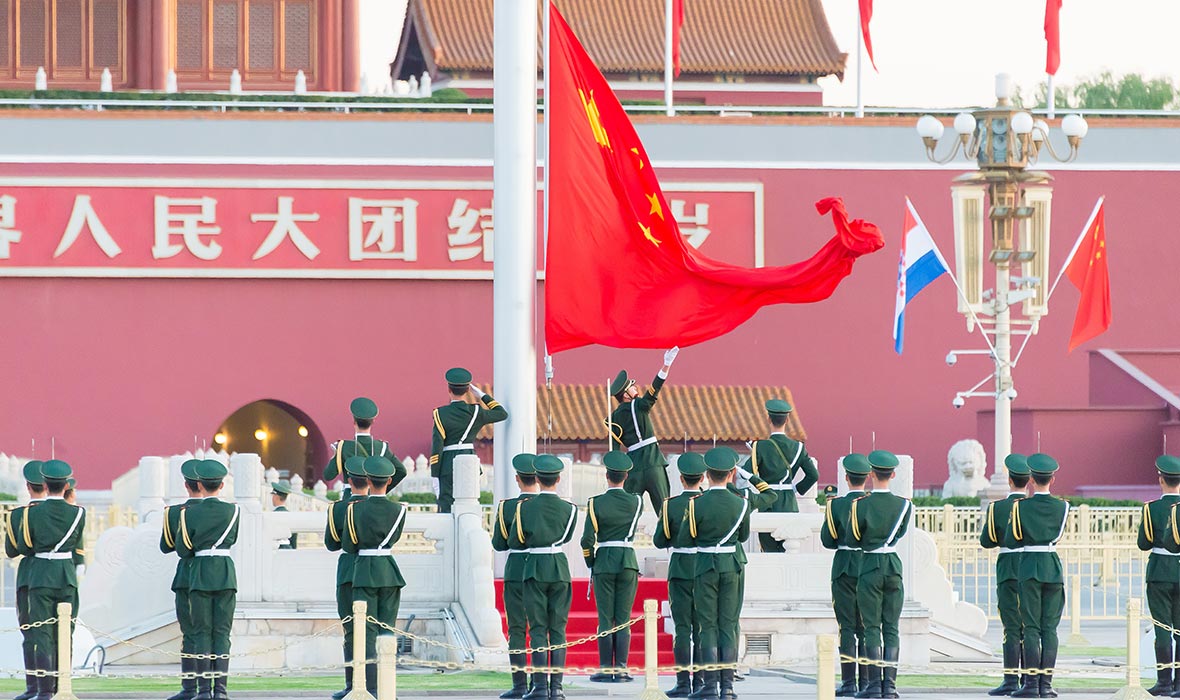
ABOVE: Flag lowering, Tiananmen Square.
1919. 1949. 1966. 1976. 1989. Almost every generation in China was to have its own moment in front of the gate known as Tiananmen. Standing at the north end of the Square and looking eastward down Chang’an Boulevard toward the Beijing Hotel, a traffic light sits at the location of the famous “Tank Man” photo. This is as close to a marker of history as the Party will likely ever allow, significant only to those who know where to look.
The mall in front of Chiang Kai-shek’s Memorial in Taipei shares elements with Tiananmen Square. There is a Memorial Hall to Chiang. There is an archway and gate. At regular times, smartly dressed soldiers carry out a changing of the guard and a flag lowering and raising with all the pomp and ceremony of their Beijing counterparts. Yet people come and go from the square without passing through metal detectors and handheld devices to screen for troublemakers. People are riding bikes around the pathways. Two kids zip by on roller blades. An older gentleman flies his kite. Most people are here to enjoy the park, politics aside, strolling around the monument on a warm autumn afternoon.
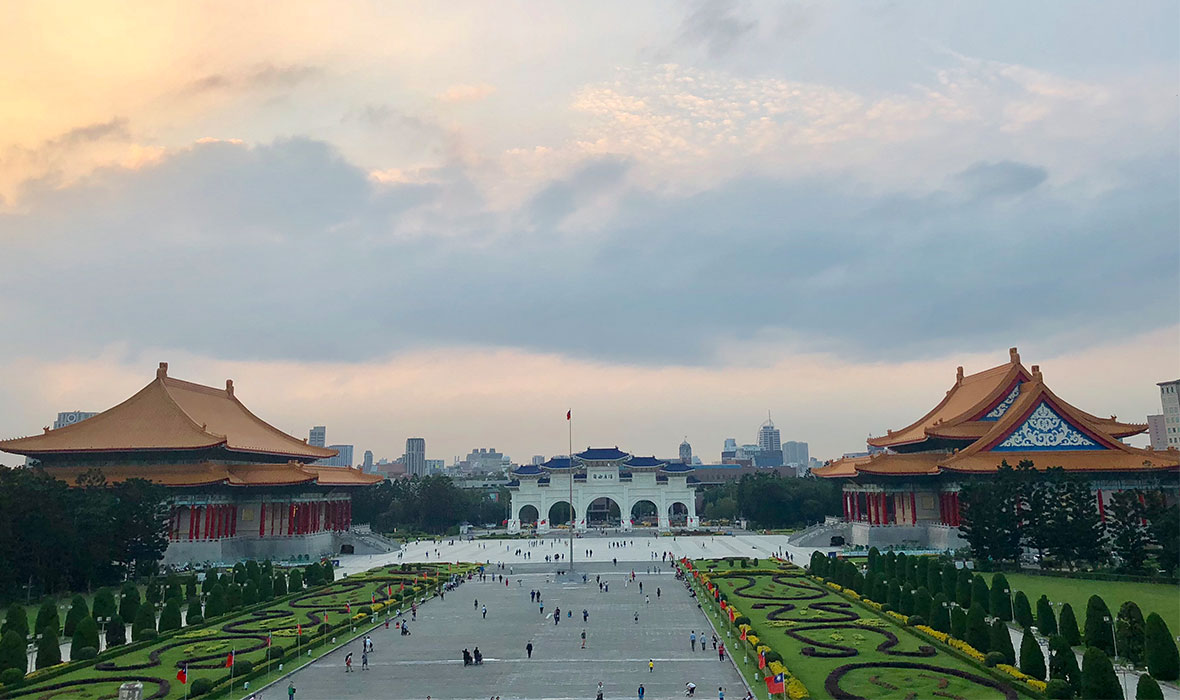
ABOVE: The mall in front of Chiang Kai-shek’s Memorial.
This lack of security is despite several recent incidents of vandalism carried out in the square and against the Chiang Kai-shek Memorial. The square in Taipei has also been the site of popular unrest including pro-democracy demonstrations in the 1980s and 1990s. In February, on the 71st anniversary of the 228 Incident in which over 20,000 Taiwanese died when the KMT government of Chiang Kai-shek crushed a popular uprising, demonstrators occupied the Chiang Kai-shek Memorial Hall splashing the hall with red paint. One can only imagine the kinetic hysteria with which the government in Beijing would react if faced with a similar demonstration of resistance in Tiananmen Square.
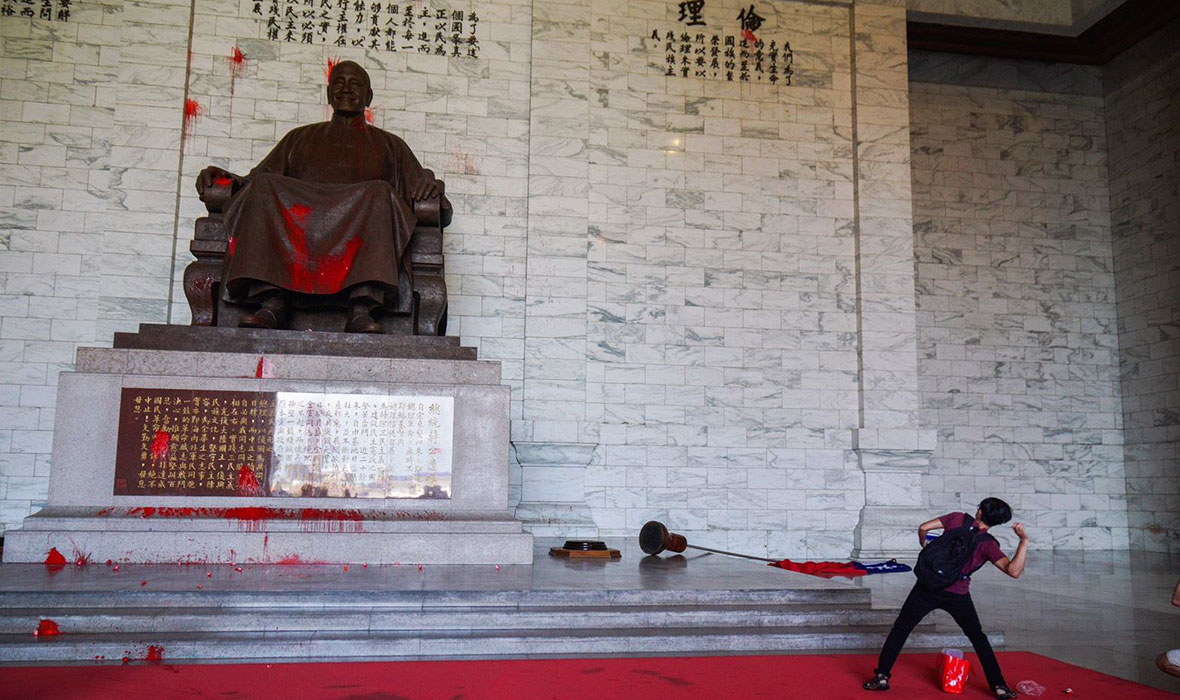
ABOVE: Red paint splashed in an act of protest in the Chiang Kai-shek Memorial Hall, July, 2018 (source).
Actually, it’s not necessary to imagine. In 2015, a Chinese court sentenced a man named Sun Bing to 14 months in prison after he threw a bottle of ink at the portrait of Mao which hangs on Tiananmen. The court accused the defendant of “defying the law, making a mess, and causing public disorder.”
In contrast, Chiang Kai-shek’s Memorial Hall has become a symbol of national historical reflection, especially with the DPP, the opposition party, in power. Unsurprisingly, Chiang’s historical legacy is being tied to contemporary politics and the bitter rivalry between the KMT and the DPP. During the administration of Chen Shui-bian in 2007, the square was renamed “Liberty Square,” in honor of the demonstrations there which ultimately led to the first popular democratic elections in Taiwan in 1996.
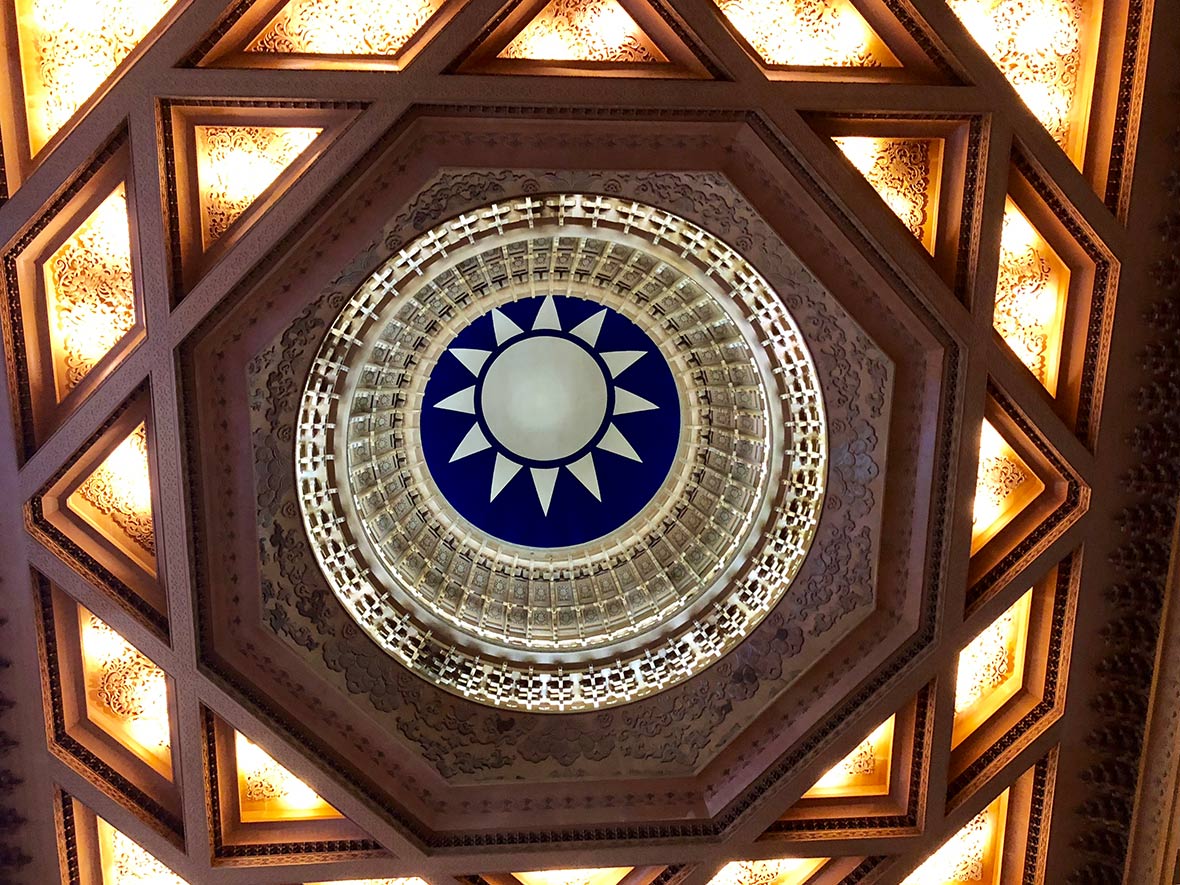
ABOVE: Chiang Kai-shek Memorial Hall ceiling.
Correction: A previous version of this article state that Liberty Square had been renamed with the return of the KMT to power. The square’s name remains unchanged.
Beijing’s leaders must view this name game with bemused horror. On one hand, it no doubt confirms what the CCP has long suspected about exposing historical legitimacy to the whims of the electoral process. But the CCP is also wrestling with its own past. The legitimacy of the Communist Party is intimately linked to their ability to spin the past. The legacy of Mao, reflected in the eyes of the senior citizens waiting to see the corpse of the man who, for better or worse, was the master of the fates for much of their lives, continues to vex Party theoreticians. Xi Jinping gives speeches honoring the anniversaries of Marx and Engels even as security forces lock up Beijing university students for organizing Marxist study societies and advocating for the rights of workers.
Out in Tiananmen Square, a group of international students unfurls a banner with their school name and the date of their China visit for a photograph that will never happen. A policeman – unable to read the foreign writing and unwilling to chance its banality – rips it from their hands and then sheepishly hands it back to the teachers. “Signs,” he explains, “are forbidden.”
The only memories to be made here will be the ones enshrined by The Party. Perhaps Beijing needs to take a lesson from Taipei.

